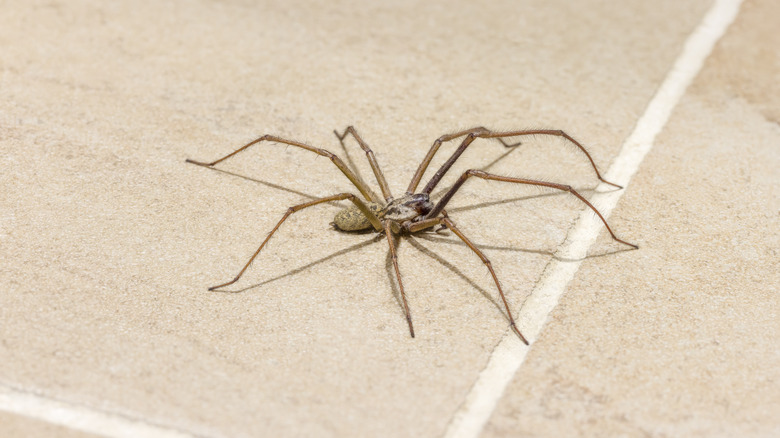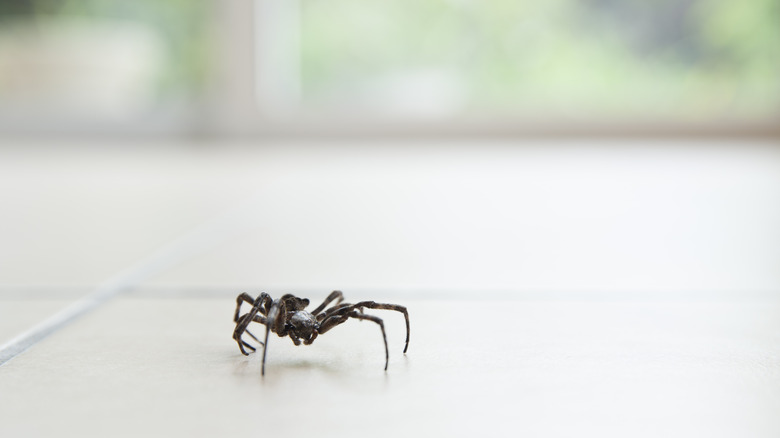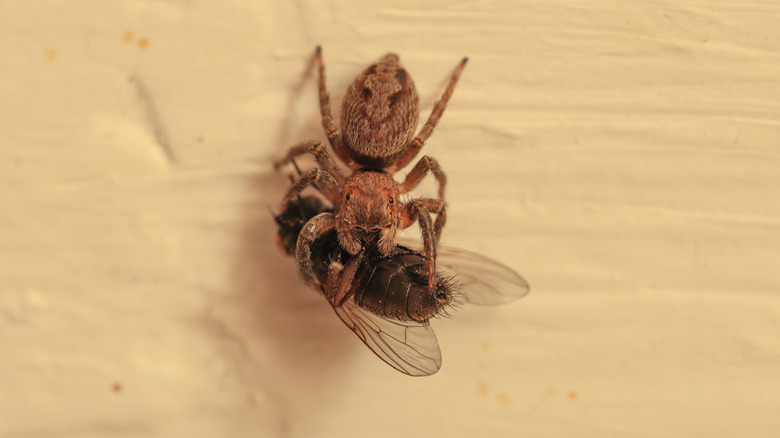The Time Of Year That Brings The Most Spiders Into Your House
As autumn rolls in, your home might seem to become a haven for various types of spiders, and there's a good reason for this seasonal shift. During fall, male house spiders, driven by the urge to mate, become more conspicuous as they actively search for partners. This spider activity uptick is tied to their mating cycle, which coincides with the cooler temperatures of autumn. Interestingly, this time of the year is not just about them mating. It's also when many of them become fully mature, which is a critical phase in their life cycle. They naturally become larger and more visible, making their presence in your home more noticeable than at other times of the year. In other words, it's a perception that there are more of them around.
Furthermore, the cooler fall weather plays a significant role in this increase in indoor spider activity. As the outdoor environment becomes less hospitable, spiders seek out warmer spaces to reside, often leading them into houses. Your home provides an ideal environment for them to escape the cold, find food, and, in the case of female spiders, lay their eggs in a safe, warm place. Another factor contributing to the increased visibility of spiders during this season is the abundance of prey. Fall is a time when many insects, not just spiders, move indoors to escape the dropping temperatures, inadvertently providing a plentiful food source for spiders. This abundance can attract more spiders to your home as they follow their food sources.
Common areas of the home spiders love
If you're wondering why certain spots in your home seem more attractive to spiders during the fall, it's largely due to their instincts. These areas are chosen by them for very specific reasons — from mating rituals to the quest for a warm, insect-rich environment. For example, window sills are a spider's favorite for a few good reasons. Not only do they provide light, but windows are also like front-row seats to a buffet, offering a variety of insects spiders feed on (which are also attracted by the light and warmth of your house). Moreover, the crevices around windows provide perfect nooks for spiders to both spin their webs and lay in wait for prey.
However, it's not just the bustling areas that attract spiders. The quieter and less disturbed parts of your home, such as basements and attics, are prime spots for female spiders. These areas offer the solitude and security needed for laying eggs and nurturing spiderlings. These undisturbed environments are crucial for their reproductive cycle. Outdoor areas adjacent to your home, like trash bins and compost areas, are also spider favorites. These spaces are rich in insect life, providing an ample food supply. Spiders may be drawn to these areas as a stepping stone before moving indoors in search of warmth. So, what does all this mean for you? Well, understanding where and why spiders set up shop in your house during the fall can help you manage them better.
The benefits of spiders and how to deal with them
If you're grappling with the idea of coexisting with spiders this fall, it's worth considering their beneficial roles. Their presence, often unnoticed, is a silent yet significant contribution to maintaining ecological balance within your home. While your first instinct might be to swat them away, arachnids are actually nature's pest control agents, quietly managing other insect populations in your home. They prey on common household insects like flies, mosquitoes, and even roaches, reducing the need for chemical pesticides. Since they contribute to a healthier living environment by keeping away pests that can carry diseases or damage your home, it's always best not to kill spiders.
It's important to remember that most common house spiders are harmless to humans. They tend to be non-aggressive and will only bite when threatened. If you're still uncomfortable, there are humane ways to manage them. Instead of killing spiders, you can gently relocate them outside by carefully trapping them under a jar and sliding a piece of paper underneath to carry them out. Be sure to wear proactive clothing when doing this. If you encounter spiders frequently, prevention is key. Try to clean your home often, reduce clutter, and seal any cracks or openings. It also helps to seek advice from pest control professionals, who can provide more targeted solutions. They can offer insights into non-lethal ways to manage spiders, ensuring that any actions taken are both effective and safe for your home environment.


